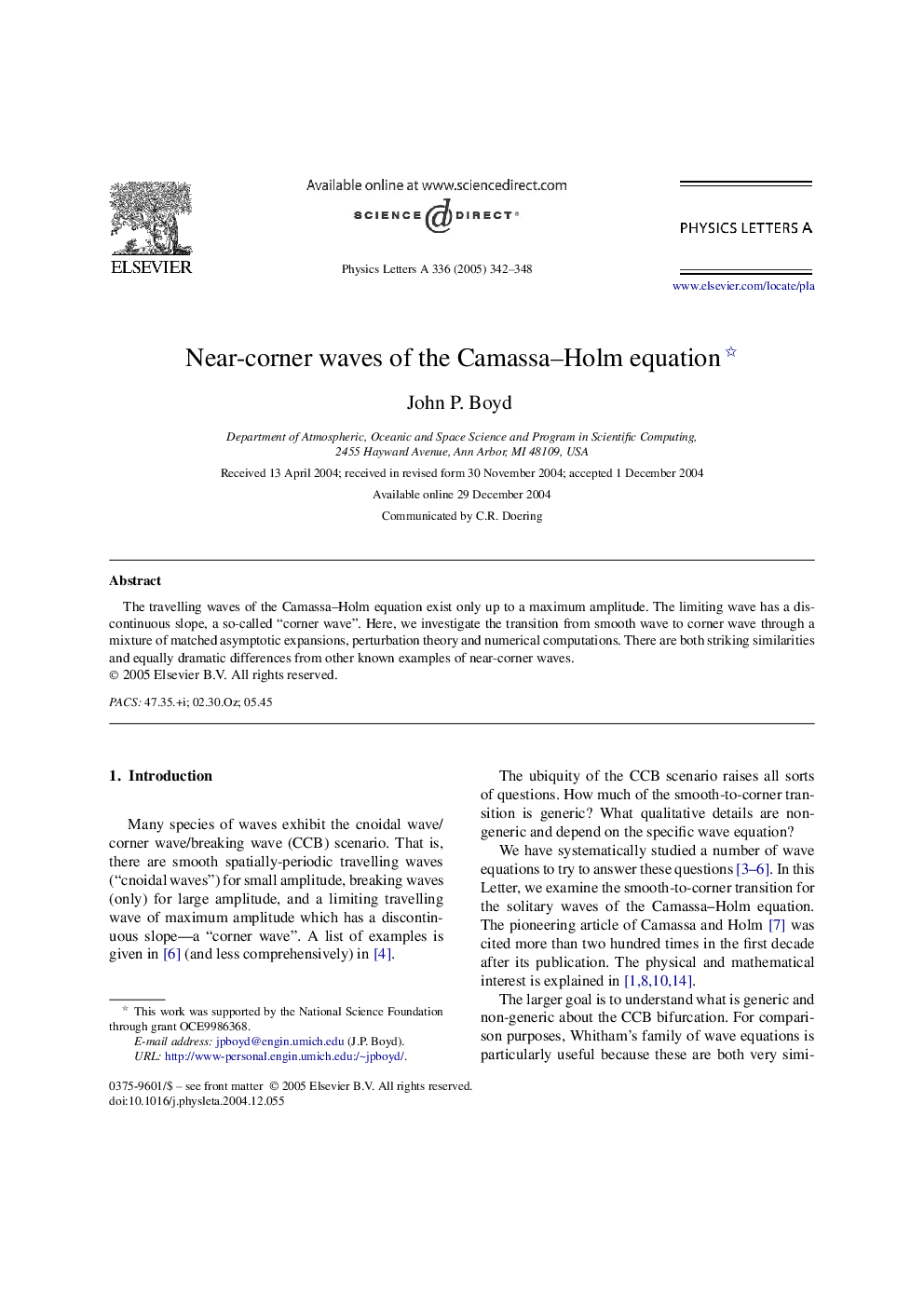| Article ID | Journal | Published Year | Pages | File Type |
|---|---|---|---|---|
| 9868352 | Physics Letters A | 2005 | 7 Pages |
Abstract
The travelling waves of the Camassa-Holm equation exist only up to a maximum amplitude. The limiting wave has a discontinuous slope, a so-called “corner wave”. Here, we investigate the transition from smooth wave to corner wave through a mixture of matched asymptotic expansions, perturbation theory and numerical computations. There are both striking similarities and equally dramatic differences from other known examples of near-corner waves.
Related Topics
Physical Sciences and Engineering
Physics and Astronomy
Physics and Astronomy (General)
Authors
John P. Boyd,
